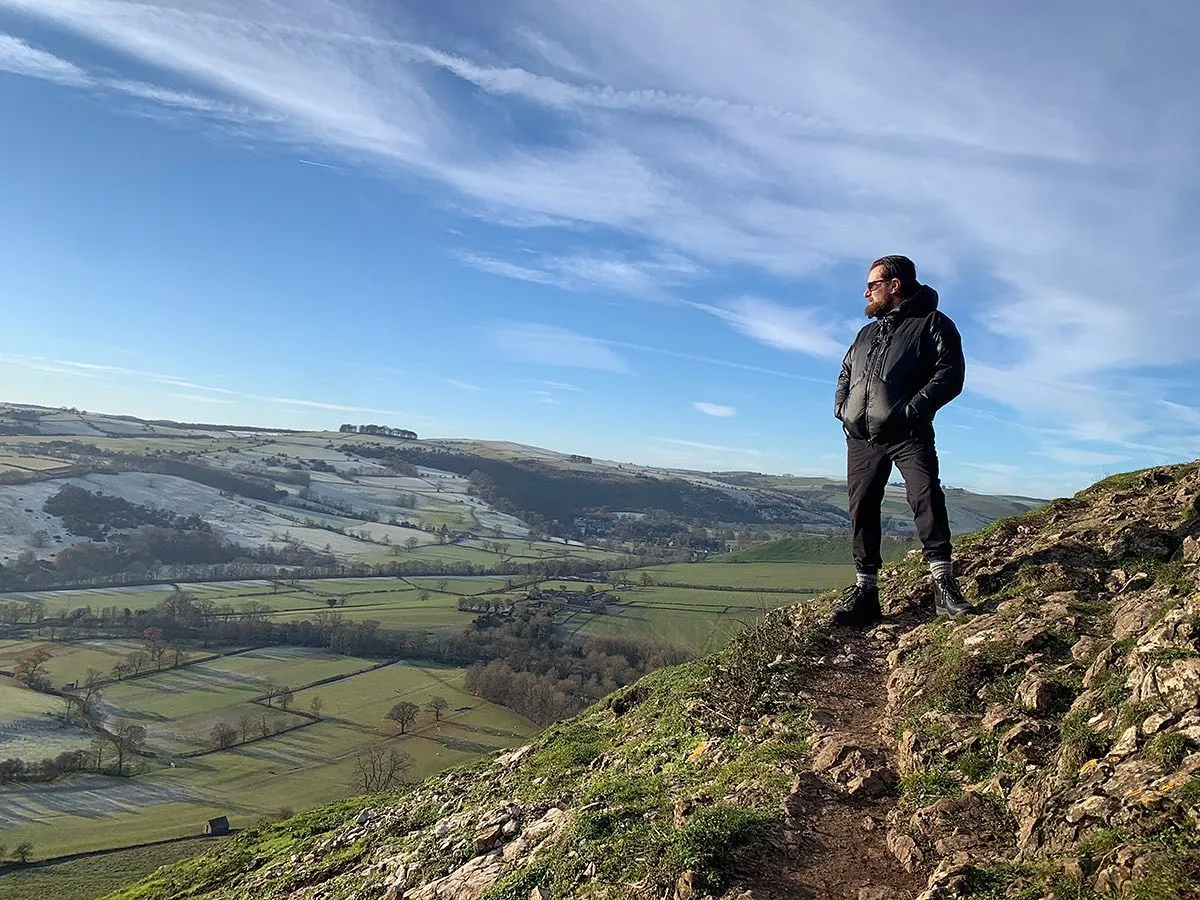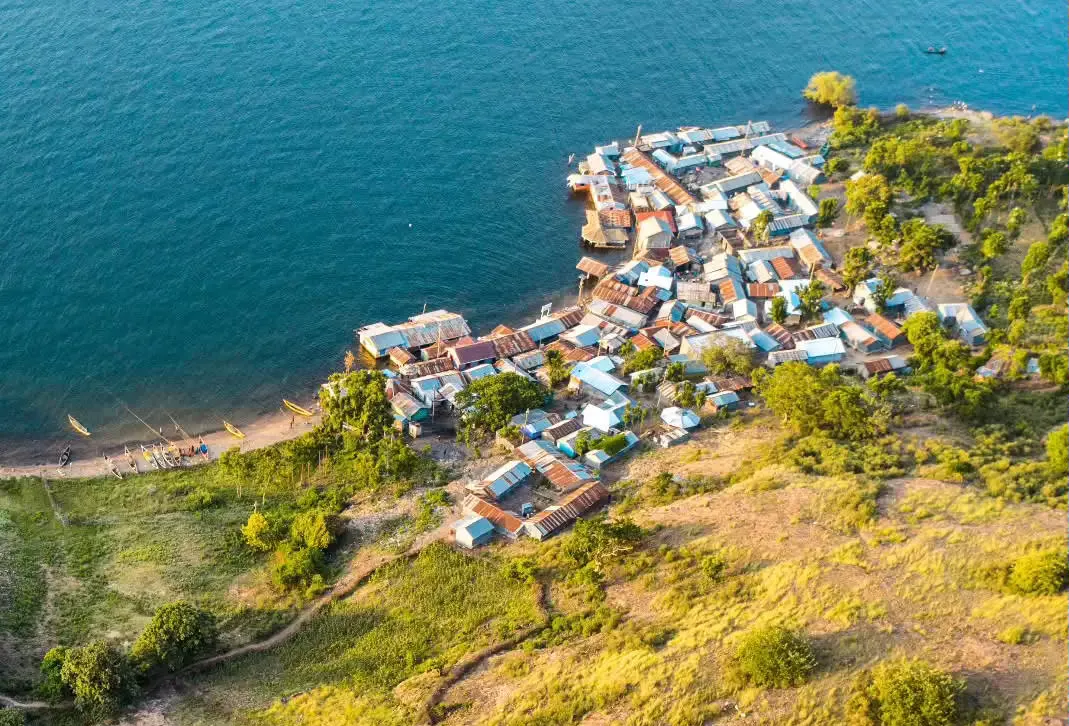
Njine Kabia Falls is a waterfall located in Kirinyaga County, Kenya. The waterfall cascades down a rock face into a pool below. It's primarily significant as a beautiful natural attraction offering a serene escape and an opportunity for local tourism, hiking, and appreciating the region's natural beauty.
Njine Kabia Falls is a hidden gem, often visited by those seeking off-the-beaten-path experiences.
The Story Behind Njine Kabia Falls
The geological formation of Njine Kabia Falls is likely due to river erosion over time, where a river or stream flows over resistant rock layers and then erodes softer rock downstream, creating a vertical drop. The specific rock types would be characteristic of the Mount Kenya region's geology.
Culturally, "Njine ya Kabia" in the local Kikuyu language can be loosely translated, with "Njine" referring to a significant, often awe-inspiring or sometimes feared place, and "Kabia" likely being a local name or descriptive term for the area or a person associated with it.
Waterfalls in many cultures, including Kikuyu, often hold spiritual or ritualistic significance, serving as places for prayer, cleansing, or as abodes for spirits. It is probable that local oral traditions exist regarding its importance or historical use by the community.
Njine Kabia Falls Location and its Access
Parent Destination(s): Located in Kirinyaga County, Central Kenya, within the broader Mount Kenya tourism circuit.
Specific Location and Address: The falls are situated near Kutus town and often accessed via the Kutus-Karatina road. They are in a rural setting, likely requiring navigation through local roads or paths.
GPS Coordinates: For a precise location, use local guides or more detailed local maps. Approximate area searches might place it generally within the region of -0.5 to -0.6 degrees Latitude, 37.2 to 37.3 degrees Longitude, but this is a very rough estimate.
How to Access: Access is typically by road from Kutus town. From the main road, it usually involves a walk or hike through local farmlands and natural terrain to reach the falls themselves.
The path might be unmarked in places, and the condition can vary, potentially becoming muddy and slippery after rains.
A vehicle, possibly a 4x4 depending on the condition of local access roads, can get you to a certain point, after which walking is necessary. Hiring a local guide is often recommended.
Proximity of Njine Kabia to Key Landmarks and Towns:
- Near Kutus town.
- Relatively close to Kerugoya town, the capital of Kirinyaga County.
- Within driving distance of other attractions in the Mount Kenya region.
Experience at Njine Kabia Falls
The core appeal of Njine Kabia Falls is the natural beauty of the waterfall itself and its tranquil surroundings. Visitors can experience the sight and sound of water plunging down the rock face, forming a pool at the base.
The area is typically verdant, with indigenous trees and plants.
Specific viewpoints would be at the base of the falls, allowing an upward view of the cascade, and potentially from the top if accessible and safe.
Wildlife is unlikely to be a major feature, aside from local birdlife and insects, but the focus is on the scenic and natural elements.
Activities possible at the Waterfalls:
- Sightseeing and Scenery Appreciation: Enjoying the waterfall and the natural environment.
- Photography: Capturing the falls and the lush landscape.
- Hiking/Nature Walks: The journey to the falls itself is part of the experience.
- Picnicking: Visitors might bring their own snacks to enjoy in the area (ensure all litter is carried out).
- Swimming (Caution Advised): Some may choose to swim in the pool at the base, but water quality and safety (currents, submerged rocks) should be carefully assessed, and it's often not officially sanctioned or supervised.
Unique Njine Kabia Falls Qualities
- Hidden Gem: A less commercialized, more natural waterfall experience.
- Lush Greenery: Typically surrounded by rich vegetation characteristic of the Kenyan highlands.
- Local Significance: Holds importance for the local community, potentially with untold stories or cultural uses.
- Hiking Destination: The trek to the falls is an integral part of the adventure.
- Photogenic Cascade: Offers beautiful opportunities for nature photography.
Best Time to Visit Njine Kabia Falls
- Time of Day: Visiting during daylight hours is essential for safety and visibility on the trails. Mid-morning to early afternoon might offer good lighting without the harsh midday sun, depending on the fall's orientation.
- Seasonality: The falls will be most impressive during and shortly after the rainy seasons (typically April-May and October-November) when water volume is highest. However, paths may also be more slippery. The dry season offers easier access, though the water flow might be reduced. Check local conditions before heading out.
Njine Kabia Falls Visitor Guide
Opening Hours: Being a natural, open site, there are likely no formal opening hours, but visits should be restricted to daylight for safety.
Entry Fees: There may be an informal community fee or a fee charged by landowners whose property is crossed to access the falls. This is usually minimal. It's wise to inquire locally or go with a local guide who understands the arrangements.
Time Needed: Allow at least 2-4 hours for the visit, including the hike to and from the falls and time spent enjoying the site. This can vary based on your starting point and hiking speed.
Guided Tours Available: Formal tour companies are unlikely to list Njine Kabia Falls prominently. The best approach is to hire a local guide from Kutus town or nearby villages. They can lead you to the falls, share local knowledge, and help navigate any community protocols.
Facilities Near Njine Kabia Falls
Facilities at the falls themselves are likely to be non-existent or extremely basic.
- Toilets: Unlikely to be any formal toilets at the site. The nearest facilities would be in Kutus town.
- Souvenir Shops, Information Center: None at the falls.
- Picnic Spots: No designated spots, but visitors can find a suitable natural spot. Practice "leave no trace" principles.
Photographing Njine Kabia Falls Nature
- Best Vantage Points: Base of the falls for the full cascade, different angles along the approach trail if they offer good views.
- Recommended Lenses/Gear: A wide-angle lens can capture the falls and surroundings. A tripod is useful for longer exposures to create a silky water effect, especially in lower light conditions under tree cover. Protect your gear from spray if you get close.
- Time of Day for Best Light: Overcast days can provide even lighting, ideal for waterfall photography, reducing harsh shadows. If it's sunny, morning or late afternoon light is softer.
Njine Kabia Falls Safety and Terrain
Safety Precautions:
- The path to the falls can be uneven, steep in places, and slippery, especially after rain. Wear sturdy hiking shoes with good grip.
- Be cautious near the edges of the falls or on wet rocks.
- If considering swimming, assess water depth, currents, and potential hazards like submerged rocks. Never swim alone.
- It's advisable to go with a local guide, especially for first-time visitors, for navigation and safety.
- Inform someone of your plans if heading to a more remote area.
Accessibility for People with Mobility Issues: Njine Kabia Falls is likely not accessible for people with significant mobility issues due to the nature of the terrain and the hike required to reach it.
Location
Book a Trip to Njine Kabia Falls
Include Njine Kabia Falls in your personalized Kenya safari itinerary and create unforgettable memories.
Plan My SafariMore Attractions

Chania Falls (Aberdares)
Serene waterfalls cascading over rocky l...

Central Tower (Hell's Gate NP)
Impressive rock tower offering climbing...

Ol Njorowa Gorge (Hell's Gate NP)
Dramatic gorge carved by ancient water f...

Ngare Ndare Forest
Thrilling canopy walk and pristine blue...

Buyangu Hill (Kakamega Forest)
Panoramic viewpoint in Kakamega Rainfore...

Takawiri Island
Pristine white sand beaches on Lake Vict...